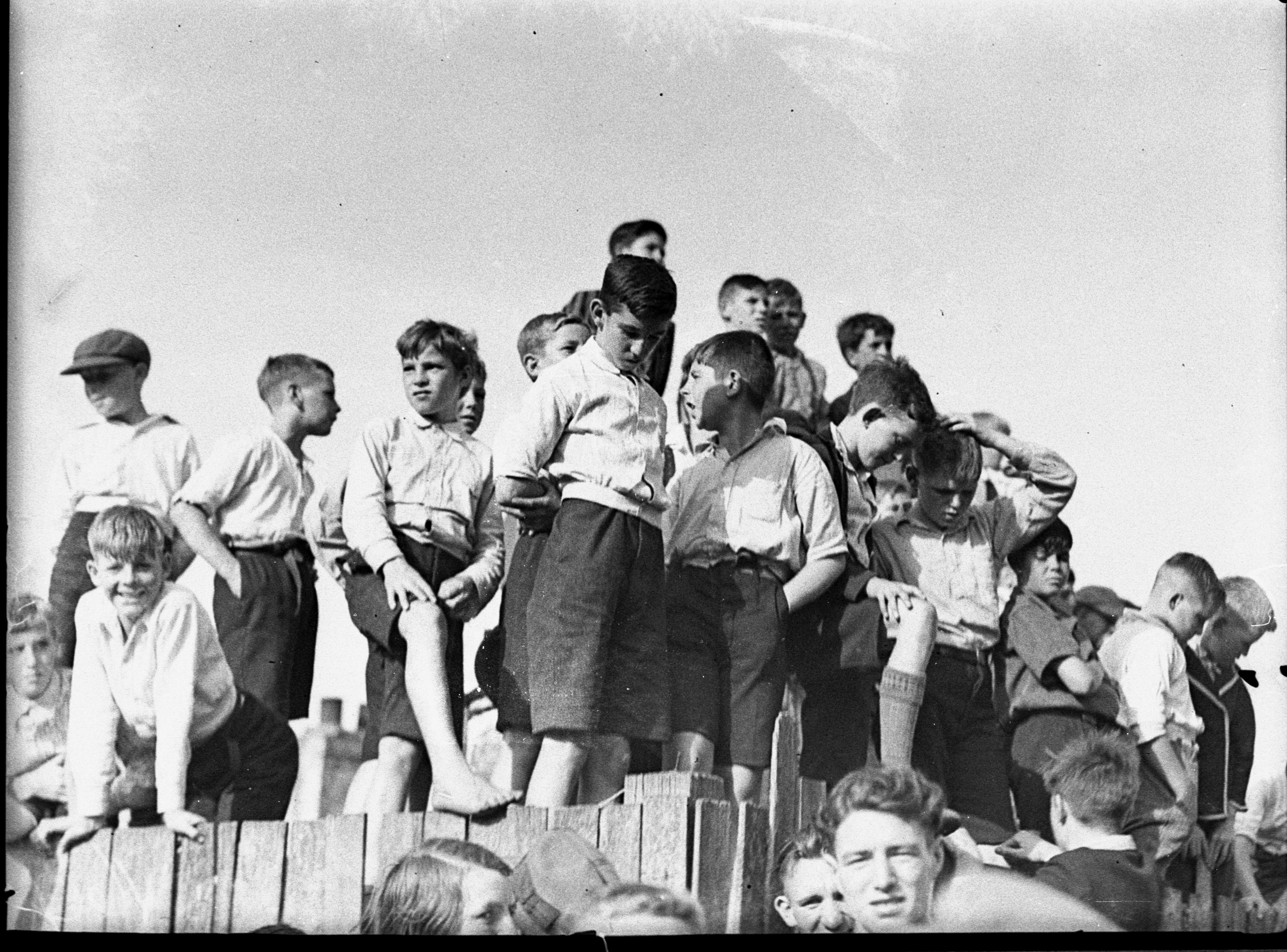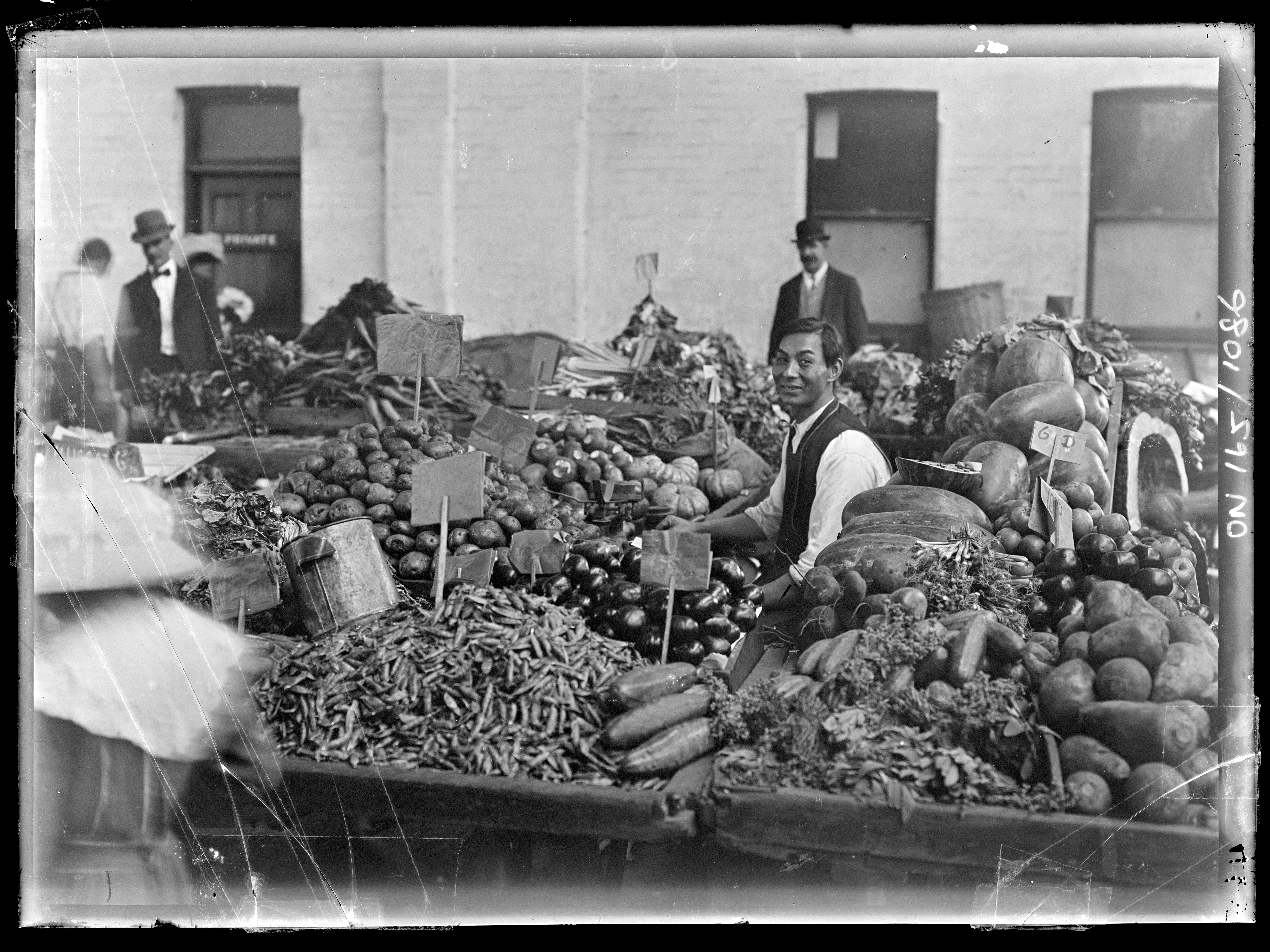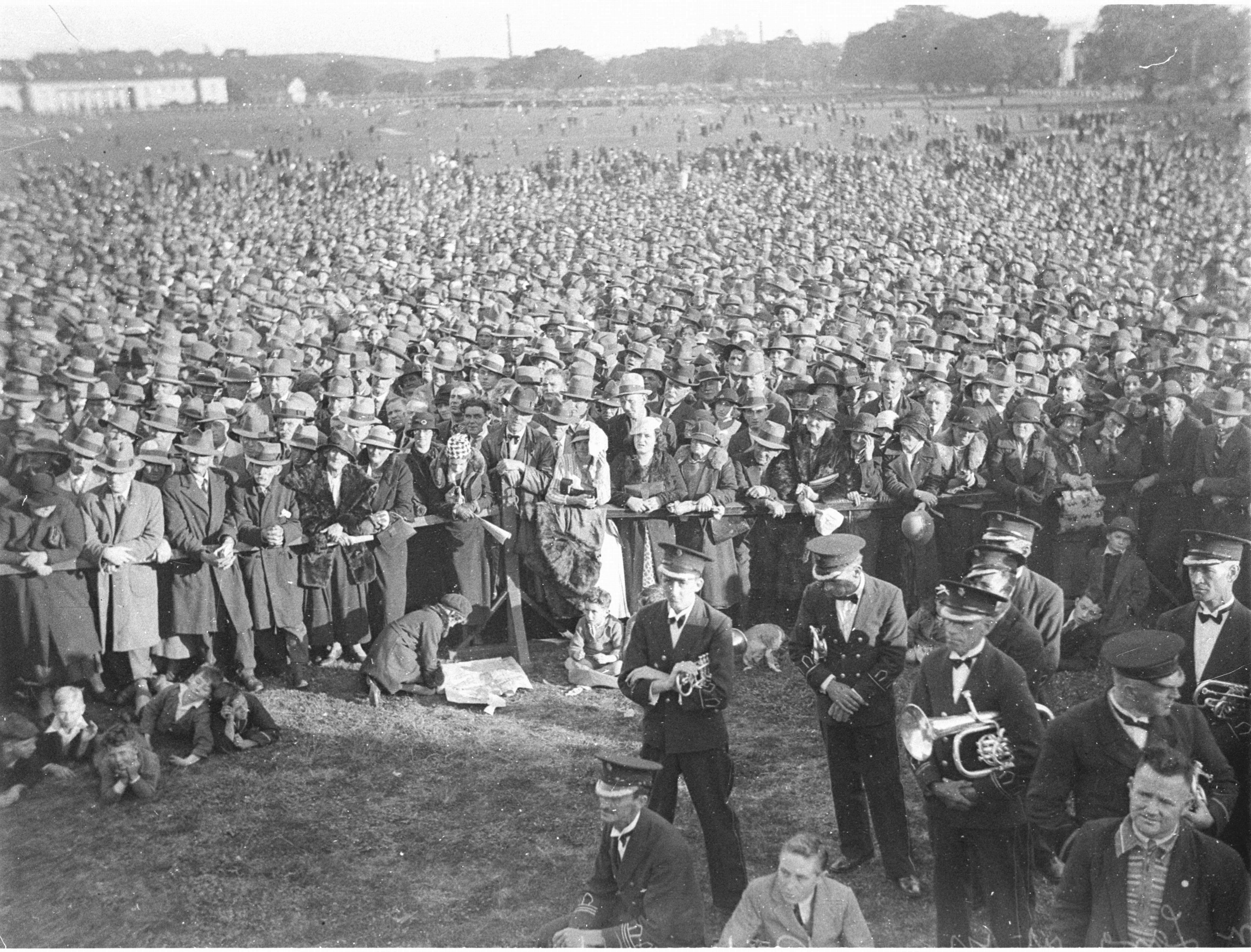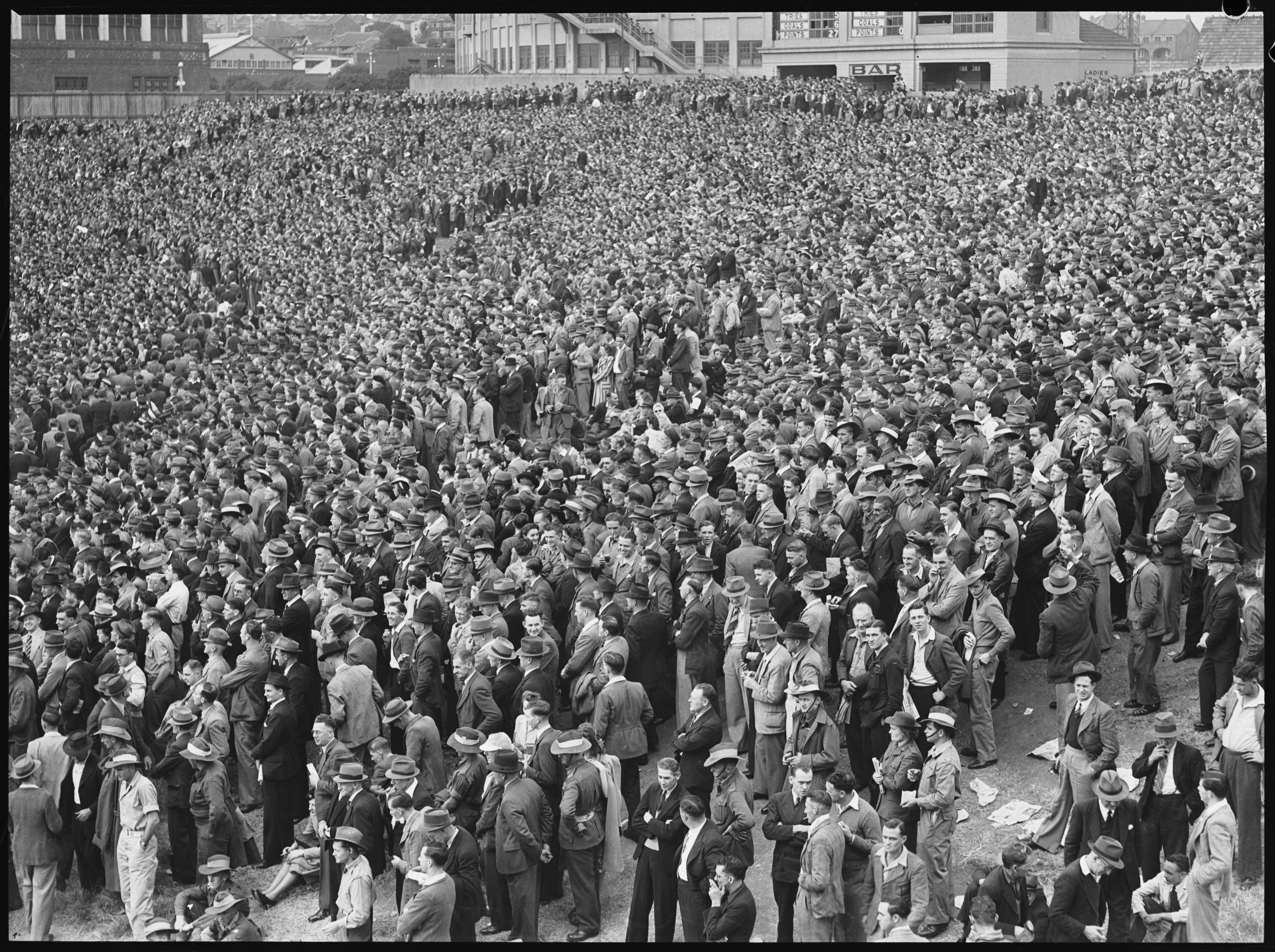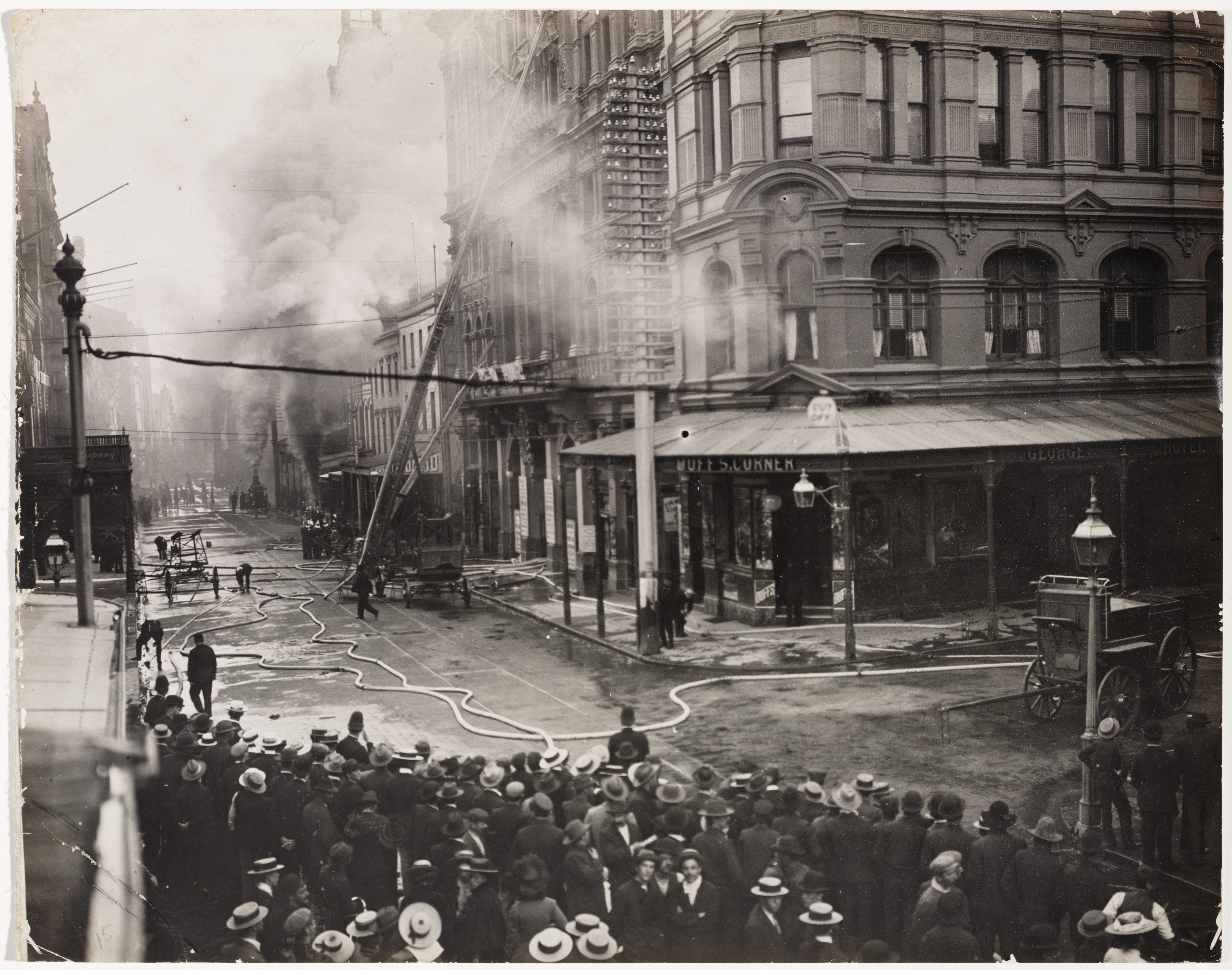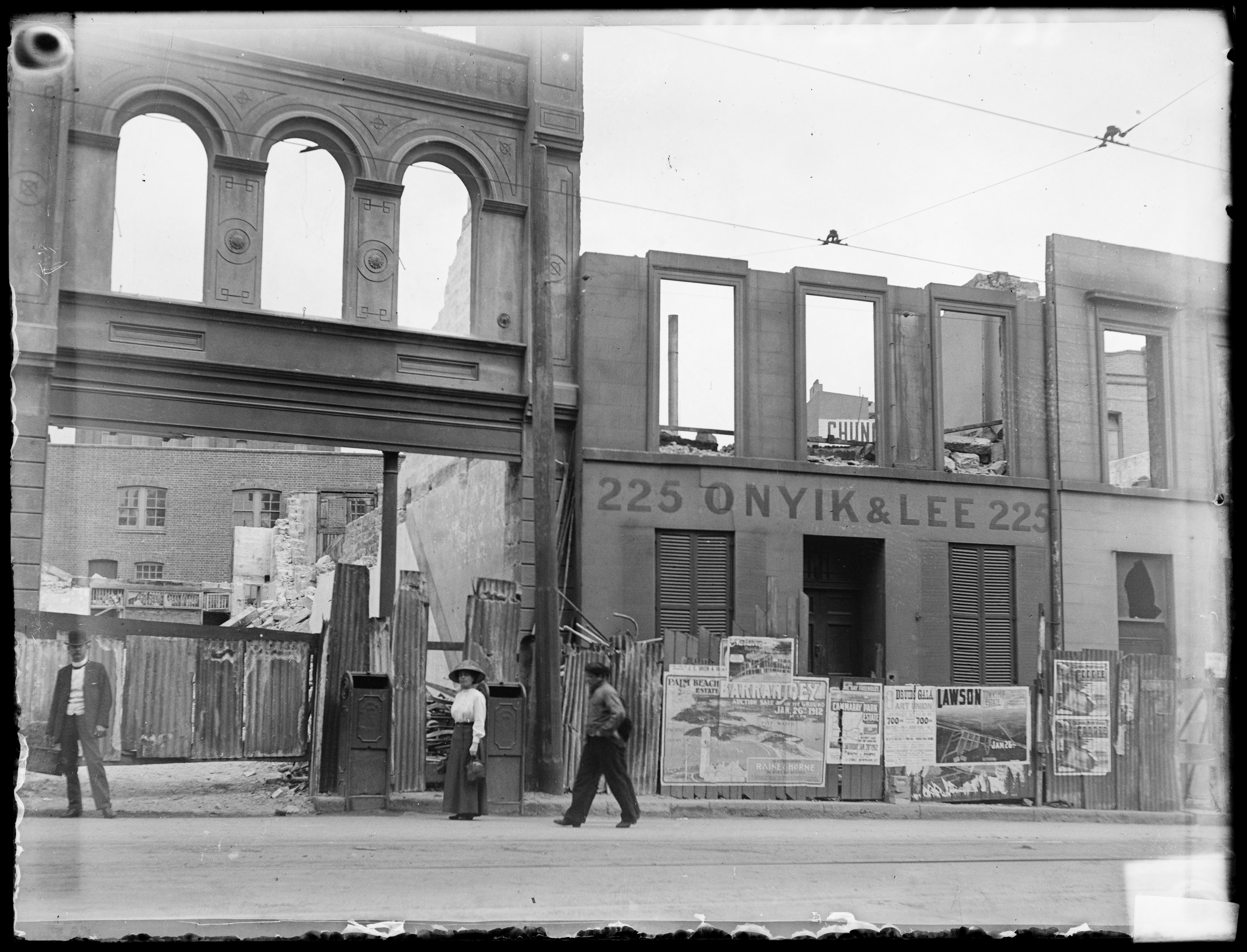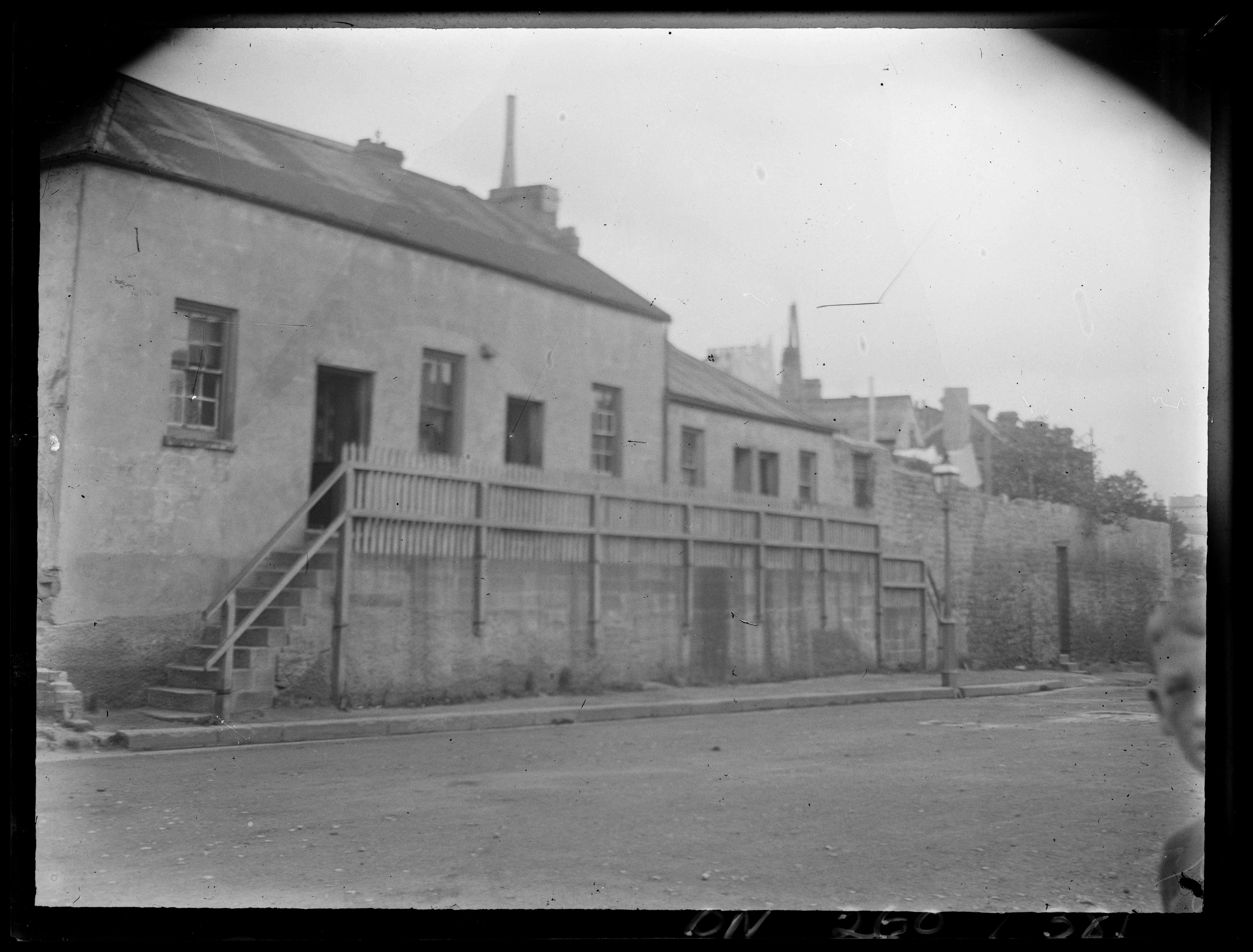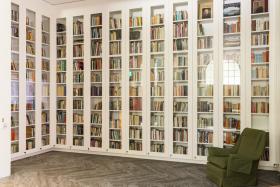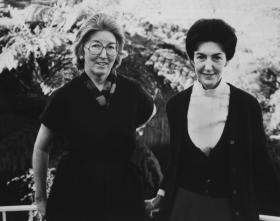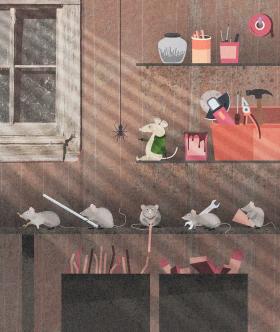An upturned face in a crowd, a sideways glance. Arms crossed, a cheeky grin, a body stretched or arched to stare back. Standing on a step, hanging out from a window ledge. What is going on here? All these bodies and faces and eyes, turned away from the main action in a photograph, looking directly at us. They’re often at the edge of the picture, although sometimes they have stopped smack-bang in the middle of the scene, taking up space, daring to be there.
What am I talking about here?
It’s those characters in historical photographs who have not only seen the photographer, but are looking right back at — and into — the camera lens. They seem to be reaching through it to return our own gaze, and our analysis or imaginings of where and who they were.
These anonymous people have long fascinated me. And the Library’s vast collection of historical photographs is a perfect place to find them.
My fascination began when I was researching histories of journalism, press photography and photographers. It continued as I was scanning political and popular events for other research projects. It began as a way to try to position the photographer in the landscape, and then became a way to pay attention to the edges of photographs, to encompass the actions of a crowd or collection of viewers. It also became a way to question our presumptions as we view the past.
These characters kept insisting that they be acknowledged. Often, they’re children, unafraid to point and wave and recognise the surveillance that is taking place of any scene. As time went on, I started to categorise different ways of noticing, admittedly in an entirely unsystematic way.
This is a quest that eludes my own research note-taking and database, catalogue searches and keywords. Why? Because these characters are never the subject of the photograph, and it’s the subject that the photograph is categorised by.
This makes it hard to find a particular photograph again. Where exactly did I see the photo of the kids up the lamppost, or standing on the fence, all looking the other way — at the camera — when the parade — the photo’s subject — passed by? And what about the one of the group huddled in the shade under the railway bridge, assessing the photographer, who was in turn documenting a train. Where are these images? As I said, they’re difficult to find again, because while I registered the presence of the kids and group, I didn’t make a research note of it. They are not the centre, they’re the charming periphery, the sly aside, the glimpse- then-look away. The shadow, the bystander.
This is all part of a game I’ve been playing.
The game has shifted as my own professional life has changed. At first my focus was historical: I had an interest in the cultural history of photography, with a curiosity too about everyday lives and the way they intersected with spectacle, all the time while I was looking intently at street life. (Doing this is itself instructive, and disrupts stereotypes — look closely and of course there are women in the street, men with toddlers on their hips, dynamism and surprise.)
Latterly, I’ve moved into working with literature and fiction writers (interviewing them on air and at writers’ festivals). But I still love those historical photos.
So what’s the game for me now? When I look at and into historical photographs, I try to imagine whose story would make the most interesting and least likely work of fiction. Often it’s those characters almost out of frame, those sharing a glance or blurred with movement. Who are you? What lives are you living or hiding? And what does it mean to acknowledge or notice you, to insist that your presence and action in these photographs matter?
Because you can look into a photograph — and you can also look out of a photograph. You can read back from a photograph, right into the body of a photographer: reading backwards, from the gaze and the angle and into the position of the photographer (balanced on top of a stepladder or resting on a wooden box of glass plates, crouched in the mud of a news event or under the cloth with a tripod), through the hands and into the cultural practice of image-making, however you want to imagine it. Sometimes it seems an act of will for so much of a crowd to ignore a photographer, to not see the mechanical box. At other times the event itself swirls around the watcher.
There are so many ways of taking apart photographs, of course, whether it’s with a researcher’s eye, an artist’s vision, a colonial critique, personal and family history, ethnographically, with an eye to theory and analysis, or in the interests of bodies and fashion and streetscapes. I could go on and on, of course. But instead choose to limit it to wondering: what about those who look back ‘at us’?
Looking back at the viewer, gazing, looking away, refusing or resisting the eye — all of these have cultural histories and traditions in painting and drawing, but in photography it is (or can be) different. Because as much as photography is famously about writing with light, it’s also about time. That time isn’t static: it’s technical, mechanical, shifting. It’s albumen and exposure, silver nitrate and flashes of powder or glass cubes that can startle the night. It’s why some nineteenth-century streetscapes can seem empty, or contain smudges of light that indicate moving bodies. (There’s even a famous very early Parisian photograph that has had an entire book dedicated to the way in which there is only one visible character in view, a man having his shoes shined by a ghostly moving shoeshine boy.)
As much as I love the streetscapes and the changing shapes of cities and towns — and I do — it’s the human subjects, the way they can flash by, elude, be revealed in extraordinary detail, that distracts and fascinates me. (I see your wrinkled stocking and your string bag, your laugh, the way you turn to tell a story. I see the hand or the newspaper that has been brought up to cover a face — don’t find me in this crowd! — as if this is a thriller after all.)
But where was I, and what’s this obsession? It’s with those characters who have seen the photographer, and look back when everyone else is looking the other way. It’s the man at the edge of a market in Sydney disrupting a supposedly ‘candid’ photograph of a Chinese vegetable seller by observing the photographer. It’s the onlooker who is not watching the game or the race or the parade, who has instead noticed the photographer, the one who is looking at them. Sometimes it’s a frozen tableaux, a group held together by what they’ve noticed — a family in a crowded beach scene, the only ones to notice that this sunny day has been turned into an image. Or it’s a hand, held up while squinting into the sun at a political rally, as children wilt with boredom and adults are held aloft by their passion — and it’s just one or two squinters and hands-clasped actors who look to us in any case, who look away from the speaker.
None of these characters, it should be said, are named and documented: not the audience, the workers, the children, the bystanders, the passers-by, and this too adds to the story.
Crowds also fragment on closer inspection, become a series of interactions — especially now that we have the ability to zoom closer and closer into these beautiful images — while raising so many delicious questions. A crowd in Martin Place, say, on Peace Day in 1918, becomes instead a series of shared conversations and whispers, body language and possibility. There’s a young man with his hands on his coat, leaning forward with great animation. A small child holding her father’s hand. A trio of women, one of whom is holding a Japanese flag and looking at the photographer. See that girl? She’s a historical figure, of course, but perhaps also a character awaiting her novel.
As this game continued, and I became slightly obsessed with checking the sightlines of photographs, the most satisfying and easiest photos to assess were always the crowd scenes. Federation Parades in 1901, the crowds watching the Great White Fleet arrive in 1908, marching out or coming home with the world wars, peace parades, political marches, Christmas shopping crowds, sports events. But crowds come in all shapes, sizes and temperaments — and disasters draw a crowd, too. Her Majesty’s Theatre Fire, Sydney, 1902: there’s a series of photographs that show steampunk-looking horse-drawn metal contraptions used to fight fires, and crowds of workers, schoolkids, women in large hats or holding bags, police officers (delicious details). And then, in one of the images, three men turn away from the destruction and look at the photographer. Arms folded. What do we make of that? Is it part of the long ambivalence towards disaster being turned into spectacle to? A moral statement about the image? Or simply curiosity about the vantage point?
As satisfying as crowd images are — and they are — they are not the only types of images that offer up these curious characters or startling sightlines. There are other categories of image that have also appeared in this entirely non-systematic survey of mine. These are the photographs that document infrastructure and process: slum clearance or ‘clean-up’ photographs in the Government Printing Office collections; council photographs of busy corners or of signs obscured by tree branches; demolitions and roadworks. In shots like these, it’s the space rather than the people that are the subject. And yet. This is where children appear to play games in crowded lanes, stopping to lean against walls and eyeball the photographer as intruder. Or where adults whose patch this is walk across the shot, or stand and cross arms and look right back. Often, there are workers as well as residents within the shots. It’s hard not to read these gazes as defiant, as taking up space, as asserting some right to the streetscape that is about to change. And yes, all this is speculation. (They might know the photographer’s assistant, be looking behind at the person walking past, or be heading to the butcher’s or wondering if they can join in the hopscotch game we can’t see). But in the frame of the photograph, there is space to speculate on that frame itself.
And the one that I found the most startling of all? A photograph where I didn’t even register the ‘intruder’ in the shot at first. It’s a photograph of a street in The Rocks, labelled and documented in terms of the street and house numbers we can see. The label, and the focus, forces us to look into the image, and to ignore a blurred face on the right of the image. It’s not hidden, it’s not in the distance, it is instead so close to the viewer — to us, the distant time traveller — that it is almost invisible. Which perhaps tells us something about the ways in which it’s always worth playing around with our viewfinder into the past.
Kate Evans co-hosts The Bookshelf on ABC Radio National. Her PhD was on the cultural history of press photography in Australia. She was the inaugural writer of ‘The library that made me’ in Openbook Summer 2021.
This story appears in Openbook winter 2024.

